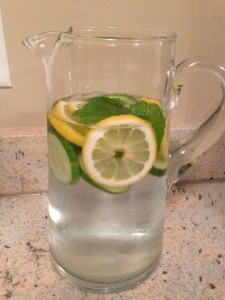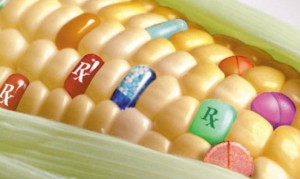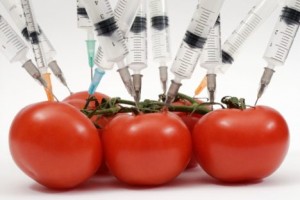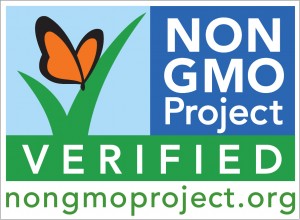I understand that you are sometimes on the go, and grab a pre-made flavored water from a grocery/convenience store, but despite the labeling as “all natural” there is a good chance there are things in your water that you wouldn’t expect. So, why not filter your own and make it tasty with ingredients of your own choosing? I do it all the time and it is a little burst of excitement on my palate that makes me stoked to drink my daily two liters, which can get boring when all you drink is plain water!
It is so easy to make yummy water, with no calories, that are refreshing and will rehydrate you. One of my favorites? Slice a half cucumber, 6 mint leaves, and slice a lemon and place in the bottom of a pitcher, fill the pitcher with filtered water, and chill. You can also do cilantro and orange slices to water, or just plain cukes. And not only does it taste great, but it looks good when you serve to people.
A little known secret, I always carry around a water bottle with me at work (BPA free) and I add different citrus fruits to my water (a squeeze of lemon, lime, orange, clementine), or a slice of peach/nectarine, a strawberry, blueberries, just a little something to give my water that kick of flavor that not only keeps me drinking it, but I feel like it gives me that little bit of sweetness I sometimes crave, so I don’t tend to reach for my afternoon Skittles as often. (I am cutting back on candy….I love it, but I know how bad it is for me, and it is SUCH a hard habit to kick!) That little bit of natural sweetness from my favorite fruits in my water helps to prevent me from reaching for my candy.
If you want to add just a little jazziness? Filter water, either chop mint leaves, or put the little ones in ice-cube trays, and fill with plain water and freeze. Add those cubes to your water, and as they melt, you get some bursts of mint! Or if you make unsweetened iced tea, add those mint cubes with a squeeze of lemon, and you have a fabulous, no calorie, refreshing beverage!
Plus? Adding cucumbers, mint, etc to my water make me feel like I’m in a spa and relax me! So do something nice for yourself, like make yummy water, and your body will feel the immediate benefits of hydration and a taste sensation all at once!
Yours in Good Health
B







